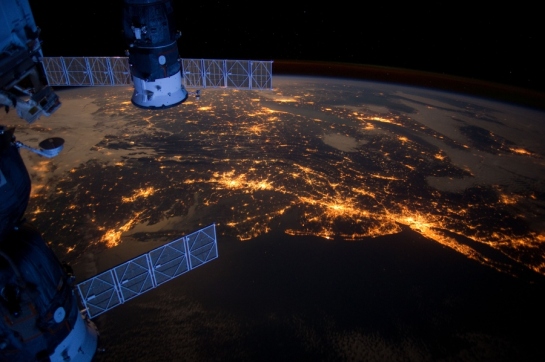
At 5:36 PM EST, ISS passed over my home.
It was visible for only six minutes,
appearing at 10° above SW and then
disappearing 19° above ENE on its journey
at five MPS, a mere 90-minute orbit,
which is how long it takes me
to drive SE to the Atlantic Ocean.
24 hours, 16 orbits, sunrises, and sunsets.
Standing tonight in the new November darkness,
my accelerating life feels momentarily, thankfully, slower.






